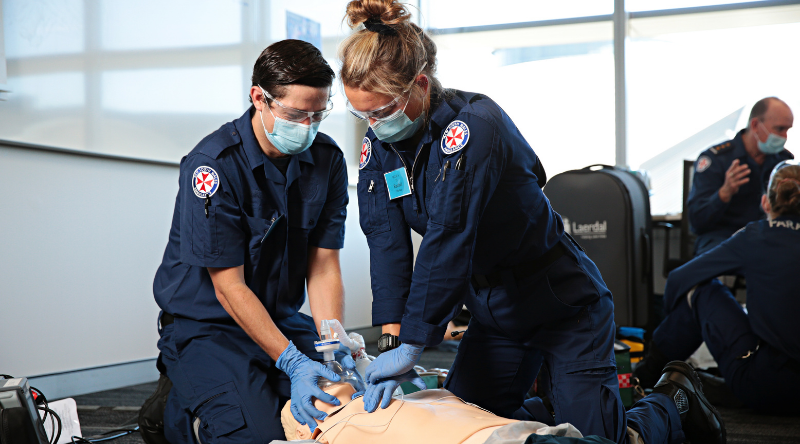
From tropical Far North Queensland to rural Victoria, people from across the country have packed up their lives and travelled to NSW to support paramedics on the frontline during one of the most challenging periods in the history of the NSW Health system.
About 130 graduate paramedics and 90 casual trainees have been put through their paces, participating in accelerated, COVID-safe learning in preparation to hit the road this month – just as modelling used by the NSW Government predicts a peak in COVID-19 hospitalisations.
All of the gradate paramedics and the majority of the casual trainees were based at NSW Ambulance’s new State Operations Centre – the first time the building has been used in an official capacity.
Mike De Beer, Program Director of the Surge Induction Course, said it was great to see the building come into its own.
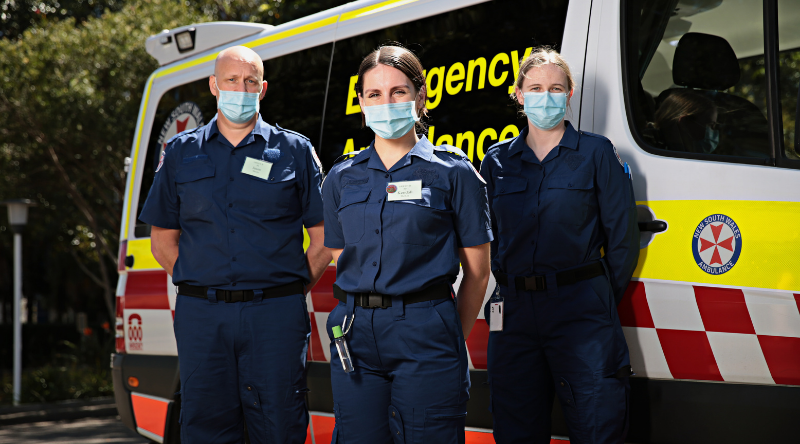
“It’s fantastic being in the new building. We haven’t had the keys for very long, so to be the first group from NSW Ambulance to be able to use it – we can see how exciting it’s going to be to move everything over here,” Mike said.
COVID safety was at the heart of the course, with students separated into small groups to minimise risk if one of them were to, in the unlikely event, test positive.
It is similar to the safety precautions and program structure used last year for the 180 graduate paramedics trained in Penrith – an experience Mike says had prepared all educators for this round of surge induction.
“Knowing what worked and what didn’t work last year was really beneficial. We learnt a lot, which was great as we weren’t starting everything from scratch,” he said.
“It’s very much a team effort and there’s been lots of people involved in the whole process.”
This sense of true collaboration, as well as the benefit of being able to reap the rewards of last year’s COVID preparedness, is a sentiment shared by the Casual Trainee Induction Program Director, Joshua Soondarum.
“With some creative rostering and program design and development we were able to come up with something really unique that can meet the needs of the casual trainee clinician,” Joshua said.
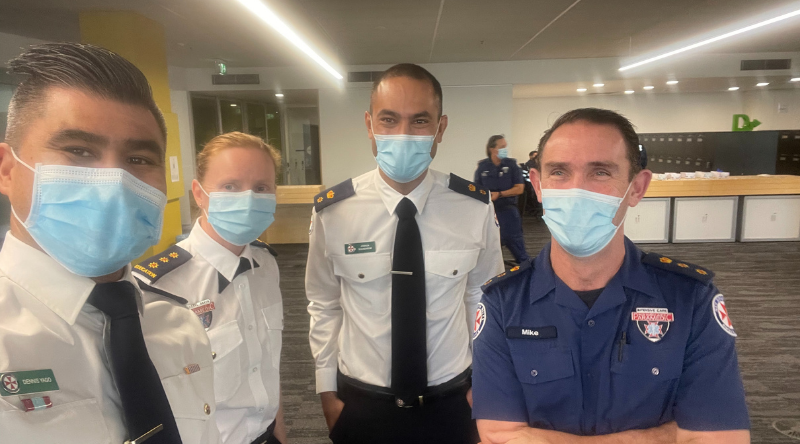
“It’s not something we’ve done before in Education – we’ve utilised this structure before but we haven’t leveraged virtual learning in the clinical space like this, the scaffolding of learning really builds a solid clinical foundation.”
Recently, some of the casual trainees inducted last year have hit the road, proving their value to the organisation.
“About three months ago, we began to see the real value of having casual trainees available,” Joshua said.
“When demand in the south west and western Sydney sectors began increasing due to the Delta variant, the casual trainees from last year were called up and brought in for a week's worth of training to return them to clinical practice. Then they hit the road and provided some much-needed relief to the workforce.”
Joshua said a big value piece of last year’s induction was that a lot of casual trainees became part of the long-term graduate workforce.
“The unique part of it is, we get to leverage all of their clinical knowledge and all of their university learnings,” he said.
“We're able to harness this learning in its infancy and then apply practical application of that alongside their clinical placement, which puts them in a really good place for their own career development.
"But it's also a workforce which we can use that we know is safe, and can work complimentary to our current clinical workforce and also provide surge capacity."
In short, he said the benefits of having casual trainees are threefold – a benefit to the organisation, a benefit to the individual for their own career development, and a benefit to leverage their existing knowledge for our patients.
Paramedic Educator looking after logistics, Scott Dries, said the induction program was all about preparedness.
“We’re trying to take the burden off the paramedic workforce that’s potentially getting the trainee as well,” Scott said.
“By really preparing them and getting them to understand the organisational structure prior to hitting the road, it takes the workload off that already overworked workforce.”
In addition to the State Operations Centre, face-to-face training programs have also taken place in three regional locations – Bomaderry, Rutherford and Point Clare.
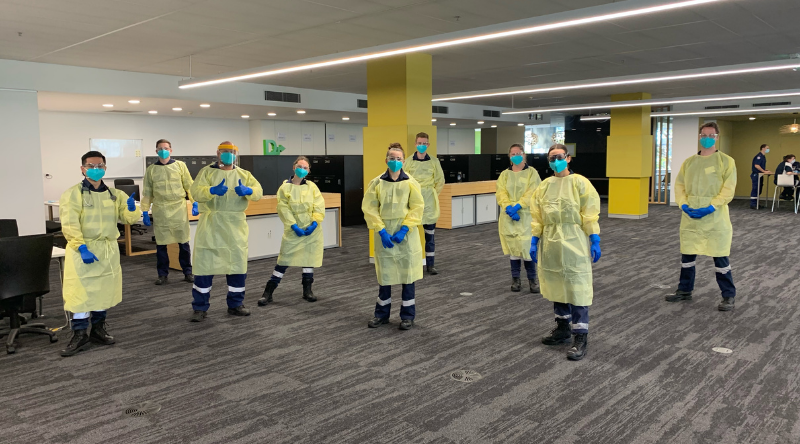
Queensland native Jason Morris, who travelled down from Cairns, said when the opportunity to join NSW Ambulance popped up, he didn’t make the decision lightly.
It was a big move – considering the current harsh interstate border restrictions and the fact that his wife is currently still living in Queensland.
“When I was driving down here I heard the Queensland Premier say they weren’t going to open the borders until they get to 90 per cent vaccination rate,” he said.
“That was almost enough for me to stop the car, turn around and drive back, because I’m not sure if they’ll ever reach that compliance target there.
“Psychologically it was a challenge because you know once you cross that border, there is no return.”
Making the transition to paramedicine later in life than most, Jason was in the Army Reserves for a number of years before he decided to leave and become a paramedic.
While he was studying, he said he found himself doing “some things you wouldn’t normally do.”
“I drove a tour bus throughout my undergraduate studies and looked after passengers coming to and from the tropics,” he said.
“Then I qualified and got an opportunity to work as an underground paramedic in the mines in central Queensland and was doing that for the last nine months.”
With varied life experiences under his belt, joining a frontline healthcare service during a pandemic was no deterrent.
“When I started my journey it was back in 2015, and as a first year student up until the end of my studies, we never thought a pandemic would hit,” Jason said.
“It’s been a bit of whirlwind, but I enjoy a bit of a challenge.
“If you really want to try and make a difference in someone else’s life, then you need to engage yourself in roles such as this.”
Fellow course participant Kendall McKee, also travelled down from Queensland.
“This the first time I’ve lived interstate,” Kendall said.
“I graduated last year and my goal was to work for a state ambulance service. NSW is the biggest ambulance service in the southern hemisphere so I thought it would be a really great opportunity, and I was just excited to get my foot in the door and start working.”
Lucy Mooney, who comes from regional Victoria, agreed it was a unique chance to join the service.
“I’m so grateful to be here. It’s such a scary time to be getting involved because there’s a lot of unknown, but I’m just excited to be able to help the current workforce,” Lucy said.
“It’s probably only going to get worse before it gets better, so just to get out there and be a part of the response is great.”
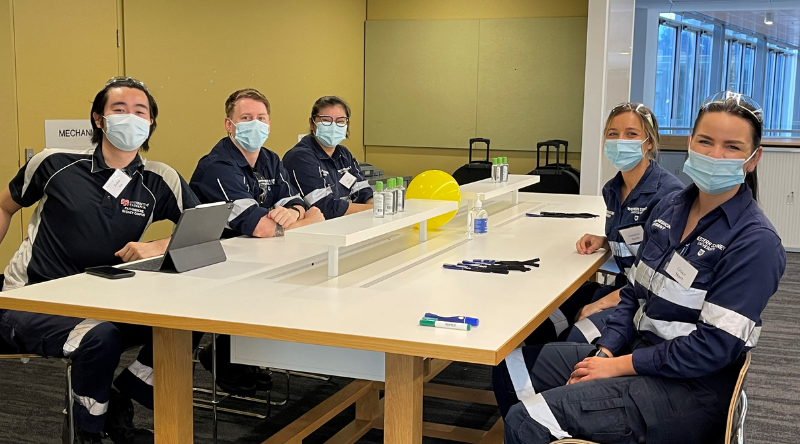
Paramedicine was more of a lateral step for Lucy, who used to volunteer as an Ambulance Officer in regional Victoria.
She studied paramedicine and nursing at a university in Ballarat where she also volunteered as a firefighter.
“I worked as a paediatric nurse this year at the Royal Children’s Hospital in Melbourne, but I just wanted something a bit more autonomous and fast-paced,” Lucy said.
“I think ultimately I’m going to be based in Sydney but I do want to move out to regional areas and work with volunteers in those areas.
“I’d love to be in a little isolated town – I think the jobs you get, you have a lot more time with your patient, you really get to build a rapport with them and actually treat them for an extended period of time. So that’s where I want to be eventually.”
Fellow Victorian Rachel Thomas said she was really excited to live and work interstate.
“I was hanging out for an offer so when this popped up I thought what an awesome opportunity – I can’t wait to go,” Rachel said.
“NSW Ambulance itself couldn’t be more welcoming if it tried, all the educators and fellow classmates and everything are amazing.
“Being a part of this COVID surge is really cool, and all the effort everyone is going to, to keep us safe and maintain our bubbles, is phenomenal.”
“I’m just super stoked to be here. It is something so special to be a part of, I definitely don’t take it for granted.”
Classmate Lachlan Swiney said: “I’m just very happy to be here and have this opportunity. I’m trying to make the most of it every day and I’m keen to get on road and start that next chapter of my life.”
As for the timing of it all, both Rachel and Lachlan said they couldn’t have imagined themselves becoming paramedics in the middle of a pandemic.
“It’s not something I pictured, but it’s something I’m ready to take on. I think it will be a great opportunity – and a great story for the grandkids,” Lachlan said.
“It is an intimidating thing, but I think working for a service like NSW Ambulance brings a bit of comfort,” Rachel said.
“I just think, if this is our starting point – being in a pandemic and having such a great team around us – we can do anything after this.”
Following graduation on Friday, October 22, the group now become paramedic interns for 12 months before they come back and do one more week of training and assessment.
